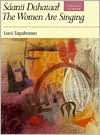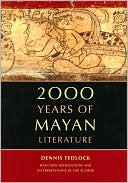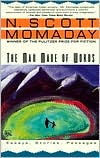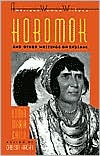Sáanii Dahataal/The Women Are Singing: Poems and Stories
In this cycle of poetry and stories, Navajo writer Luci Tapahonso shares memories of her home in Shiprock, New Mexico, and of the places and people there. Through these celebrations of birth, partings, and reunions, this gifted writer displays both her love of the Navajo world and her resonant use of language. Blending memoir and fiction in the storytelling style common to many Indian traditions, Tapahonso's writing shows that life and death are intertwined, and that the Navajo people live...
Search in google:
In this cycle of poetry and stories, Navajo writer Luci Tapahonso shares memories of her home in Shiprock, New Mexico, and of the places and people there. Through these celebrations of birth, partings, and reunions, this gifted writer displays both her love of the Navajo world and her resonant use of language. Blending memoir and fiction in the storytelling style common to many Indian traditions, Tapahonso's writing shows that life and death are intertwined, and that the Navajo people live with the knowledge that identity is formed by knowing about the people to whom one belongs. The use of both English and Navajo in her work creates an interplay that may also give readers a new way of understanding their connectedness to their own inner lives and to other people. Luci Tapahonso shows how the details of everyday life—whether the tragedy of losing a loved one or the joy of raising children, or simply drinking coffee with her uncle—bear evidence of cultural endurance and continuity. Through her work, readers may come to better appreciate the different perceptions that come from women's lives.Library JournalNavajo poet and English professor Tapahonso here celebrates the importance of conversation and the spoken word among her people. Driving back and forth between her parents' home in Shiprock, New Mexico, and her current home in Lawrence, Kansas, this gifted writer recalls snatches of family memories and tribal stories through the intermingled forms of poetry, songs, prayers, and anecdotes. Ranging across Navajo history, this collection in English and Navajo is warm and witty. Tapahonso states that for people like herself who live away from their homelands, ``writing is the means for . . . restoring our spirits to the state of hozho , or beauty, which is the basis of Navajo philosophy.'' This book is a clear reflection of that sentiment. Recommended for most collections.-- Lisa A. Mitten, Univ. of Pittsburgh Lib.
Preface: The Kaw River Rushes WestwardBlue Horses Rush In1The Weekend Is Over3Just Past Shiprock3In 18647They Were Alone in the Winter11They Are Silent and Quick13It Was a Special Treat15It Has Always Been This Way17Shaa Ako Dahjinileh/Remember the Things They Told Us19Leda and the Cowboy21These Long Drives23Hills Brothers Coffee27One Dog Story29Dit'oodi33It Is a Simple Story37She Says39Raisin Eyes41How She Was Given Her Name43If Shiyazhi Could Speak45Light a Candle49What Danger We Court51The Pacific Dawn53It Is Night in Oklahoma55Outside a Small House57Shuuh Ahdee59A Whispered Chant of Loneliness63Little Pet Stories65The Motion of Songs Rising67Uncle's Journey69The Snakeman77What I Am85
\ Library JournalNavajo poet and English professor Tapahonso here celebrates the importance of conversation and the spoken word among her people. Driving back and forth between her parents' home in Shiprock, New Mexico, and her current home in Lawrence, Kansas, this gifted writer recalls snatches of family memories and tribal stories through the intermingled forms of poetry, songs, prayers, and anecdotes. Ranging across Navajo history, this collection in English and Navajo is warm and witty. Tapahonso states that for people like herself who live away from their homelands, ``writing is the means for . . . restoring our spirits to the state of hozho , or beauty, which is the basis of Navajo philosophy.'' This book is a clear reflection of that sentiment. Recommended for most collections.-- Lisa A. Mitten, Univ. of Pittsburgh Lib.\ \








